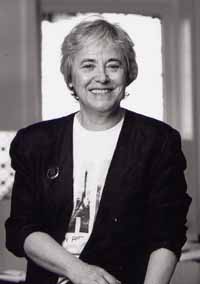A Picture Is Worth A Thousand Words: Arts Education in New York City Schools
A picture is said to be worth a thousand words, but not in most New York City Public Schools.
Motivated by their concern that a generation of children will grow up with little, if any, exposure to the arts, the City Council Education Committee held a joint hearing with the Committee on Cultural Affairs, Libraries, and International Intergroup Relations to discuss guidelines and procedures for reform efforts.
The meeting, which was held recently, provided a forum in which teachers, parents, arts groups, and representatives from the Departments of Education and Cultural Affairs could testify in advocacy of a revamped curriculum. Among those witnesses were Judith Burton, Professor of Art and Art Education, and Ingrid Butterer, a TC instructor.
"There is an urgent need to understand that the arts, when well taught, contribute to the formation of human minds," said Burton. "The arts, as symbol systems of the culture, are languages of thought and, like the ability to use words to make sense of everyday experiences, the images of art, the sounds of music, the gestures of dance and the rhythms of poetry serve the same ends."
Those who support arts education believe it to be a critical component that not only aids in the development of students' academic achievements, but also enables them to comprehend and contribute to the world in which they live. They also see it as a way to increase parent involvement because it invites their attendance to and participation in school performances, workshops, and field trips to cultural and community organizations.
Despite the occurrence of two major events in the 1990s-the founding of The Center for Arts Education for the restoration of arts education in the City's public schools as well as the creation of Project ARTS (Arts Restoration Through the Schools)-many argue that inequities persist in the quantity and quality of arts education throughout the Community School Districts. Moreover, the New York City Arts Roundtable's estimate that cultural institutions and community organizations underwrite 60 percent of the funding for arts education in the City's public schools suggests that New York's per capita allocation for arts programs is inadequate.
Butterer has experienced the pangs of working in a school where arts education was not valued. "The most significant of the challenges [I faced as a New York City art teacher]," she said, "was that my administration and many of my teaching colleagues had little understanding or appreciation of arts education."
Both Burton and Butterer, as well as other proponents of arts education, want New York City schools to establish a quality curriculum that is comprehensive, accessible by all students, adequately funded, and housed in the facilities necessary for proper instruction, including theater spaces, music rooms and dance studios. Perhaps most of all, they want a program that is valued by all members of the school community, because as Burton put it, "the capacity to use the arts to make the world meaningful is within the potential of all children and adolescents."
Published Monday, Oct. 6, 2003
